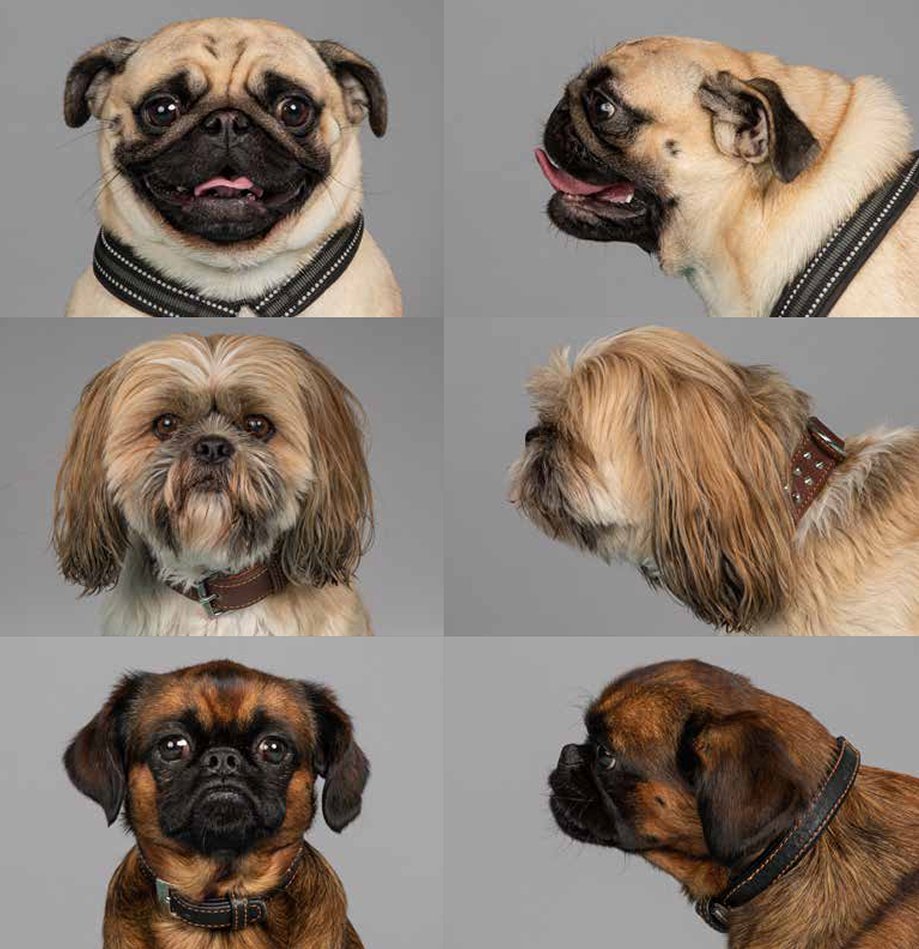Criteria for breeding healthy short-nosed dogs
Due to malformation of the skull and muzzle, short-nosed dogs often have stenotic nares, bulging eyes and deep nasal skin folds. This disposition is associated with a high risk for shortness of breath and painful eye disorders. However, the open standard in the existing Dutch law made it difficult to enforce rules against breeding with these malformed animals. On behalf of the Minister of Agriculture, Nature and Food Quality, the Expertise Centre Genetics of Companion Animals (ECGG) of the Faculty of Veterinary Medicine of Utrecht University has now developed enforcement criteria. Due to these new criteria, the Food and Consumer Product Safety Authority and the National Animal Protection Inspectorate can better enforce the existing legislation.
The criteria point the way to a new generation of dogs that can breathe easily and do not suffer from painful eye problems

Physical and physiological hardship
Breeding selection has led to an increasingly extreme malformation of the dog skull to ultimately obtain a dog with a so called ‘cute’ round shaped head and prominent eyes. Breeding dogs with this type of severe skull and muzzle abnormalities leads to physical and physiological hardship and limits the natural behaviour of these dogs. This violates their integrity and is a big risk for their welfare and therefore contravenes Dutch animal welfare legislation. Choosing breeding dogs with only mild malformations can favourably influence the welfare risks in the offspring. Unfortunately, this choice is still made too infrequently in modern dog breeding.
At the end of August 2023, the Ministry of Agriculture, Nature and Food Quality in the Netherlands announced that the rules for breeding with extremely short-skulled ('brachycephalic') dogs have been tightened. The temporary exception for breeding brachycephalic dogs that do not meet the criteria in combination with a dog with a longer skull has expired after 4.5 years. Also, dogs that have undergone surgery for problems associated with brachycephaly such as stenosed nostrils or a soft palate that is too long may no longer be bred. Veterinarians play a key role in education and application of the tightened rules and can support breeders in selecting breeding stock.
New animal welfare criteria
The report Breeding with short-nosed dogs (in Dutch: Fokken met kortsnuitige honden) by the Expertise Centre Genetics of Companion Animals outlines a limited number of enforcement criteria and describes numerous additional criteria that can further help vets and breeders to select for healthy parent animals. The report is available Dutch and has been translated into English and German.
Following the launch of the report, the Minister for Agriculture, Nature and Food Quality, Carola Schouten, has introduced new animal welfare criteria for dog breeders. These focus on the assessment of the severity of the dog’s skull malformation, writes Minister Schouten in a letter to the Dutch House of Representatives, based on for example sniffing or snoring sounds when at rest, relative muzzle length, and the ability of the dog to close the eyelids.
Breeding selection in the direction of an (increasingly) less extreme skull and muzzle malformation considerably reduces welfare risks. The outcome of this project is therefore an important stepping stone for the further development of enforcement criteria for breeding dogs and other animals with respect to a larger number of health and welfare risks.

